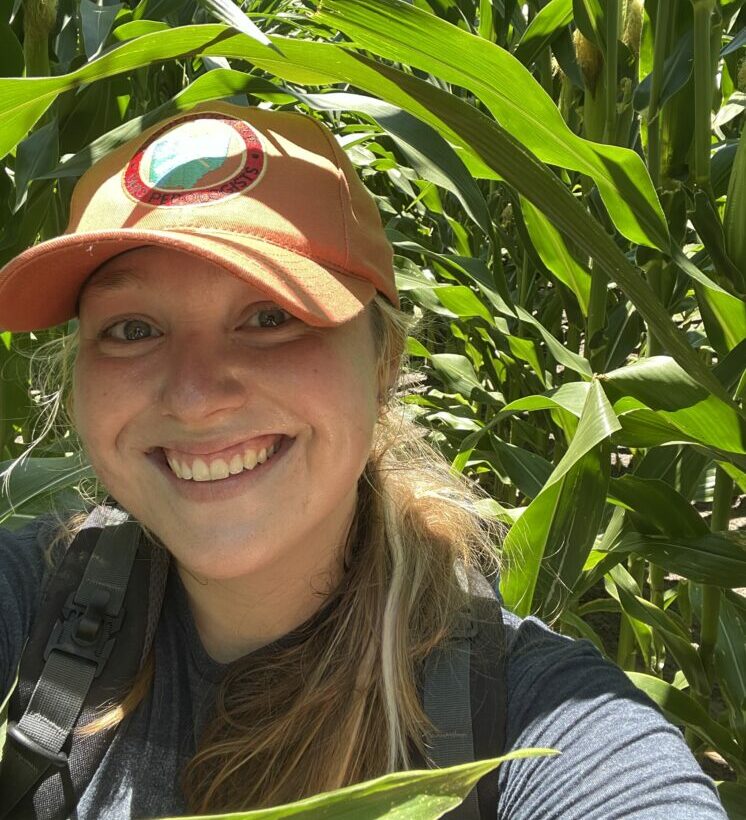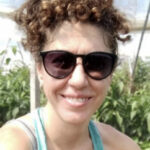
Editor’s Note: Julia Janson is a winner of The Story Exchange’s 2023 Women In Science Incentive Prize.
Soil scientist Julia Janson’s research gives new meaning to the term “field” work. The PhD candidate at North Carolina State University spends time with farmers to understand how rising sea levels and higher concentrations of salt in the soil impact carbon cycling, microbial diversity and crop productivity in her state’s valuable agricultural lands. That area is rural and beautiful, Janson says, and famously flat and fertile, where generations of farming families still harvest cash crops like corn, soybeans and potatoes. “Being able to connect with them and spend so much time there has been really eye-opening,” she says.
Janson explains that the location of the fields are their blessing and curse. The Albemarle-Pamlico peninsula juts out into brackish waters buffered from the Atlantic Ocean by the flat barrier islands of the Outer Banks. Most of the area is marshy by nature, containing rich organic soil, but it also lies just a few feet above sea level. To make it more suitable for agriculture, the coastal wetlands were cut through centuries ago with ditches and canals for drainage and irrigation. It’s an ingenious, ancient system that is also inherently vulnerable.
Even in the best of circumstances, wind blowing inland “in just the right direction on a blue-sky sunny day,” says Janson, can push saltwater up the ditches and onto the fields. And now, rising sea levels and intensifying storms are exacerbating storm flooding and saltwater intrusion in low-lying counties. That’s now threatening farmers’ livelihoods and may be contributing even further to climate change, two issues Janson is working to mitigate.
First, Janson and her team are giving farmers a way to monitor what’s going on with their fields in real time. “We’re providing growers with equipment and knowledge on how to quickly analyze what kind of salt intrusion is occurring on their land,” she says. That way, they can measure water quality and soil health anytime, giving them a better idea of when and what type of crops to plant (soybeans, for example, are not salt tolerant while cotton is).
Salinity now impacts billions of acres of topsoil and subsoil in over 100 nations worldwide, according to the United Nations Food and Agriculture Organization. Experts predict roughly five million additional acres each year will succumb, threatening food security and billions of dollars in revenue. The extent and intractability of the problem is causing many farmers to simply walk away from their land.
But Janson says that giving up simply isn’t an option for the farmers she works with. “One of the really frustrating things for the growers out there is that a lot of people are saying, ‘Okay, you see this coming, so why don’t you just leave?'” she says. “But a lot of these family farms are fourth generation, so there’s a lot more than their income tied up in these lands and these farm systems.”
Janson also wants to understand better how salinization events such as storm surges affect the soil microbial community because saltwater-impacted ground releases more carbon dioxide and methane—both potent greenhouse gasses—into the atmosphere. “You don’t have the full picture unless you include what is driving nutrient cycling,” says Janson. “I’m hoping [my research] leads to more holistic views of how carbon reservoirs may change throughout the next couple of decades.”
In the case that some fields must be abandoned, Janson also wants the best possible coastal restoration projects in place including planting salt-tolerant tree species. “This can help buffer current crop lands, the ones that are super-productive, against some of these flooding events,” says Janson. “I want to encourage the growers who’re doing all they can. We’re really trying to help them.” ◼️



